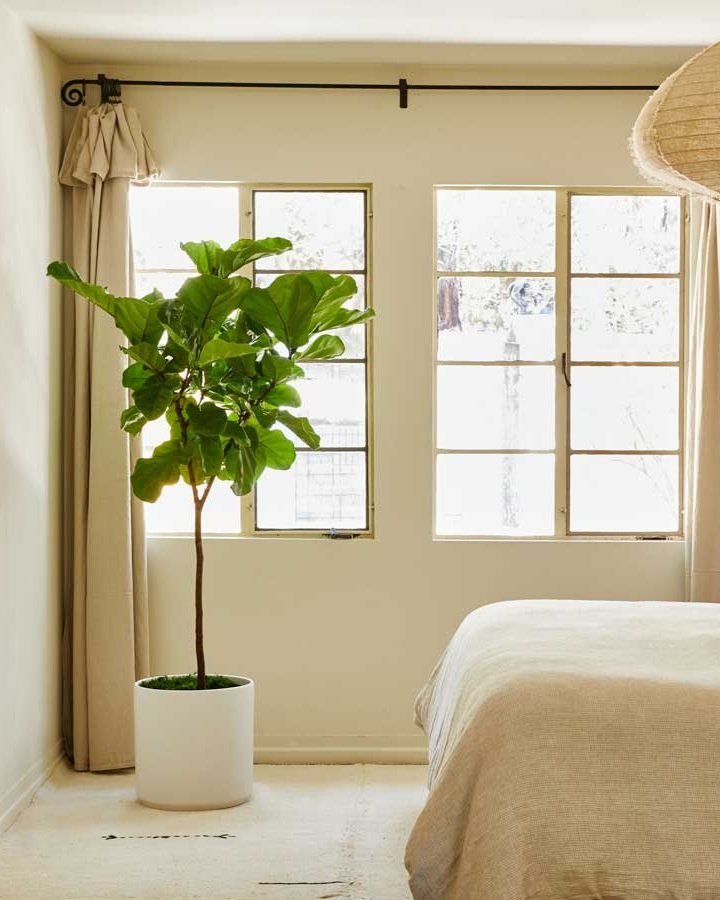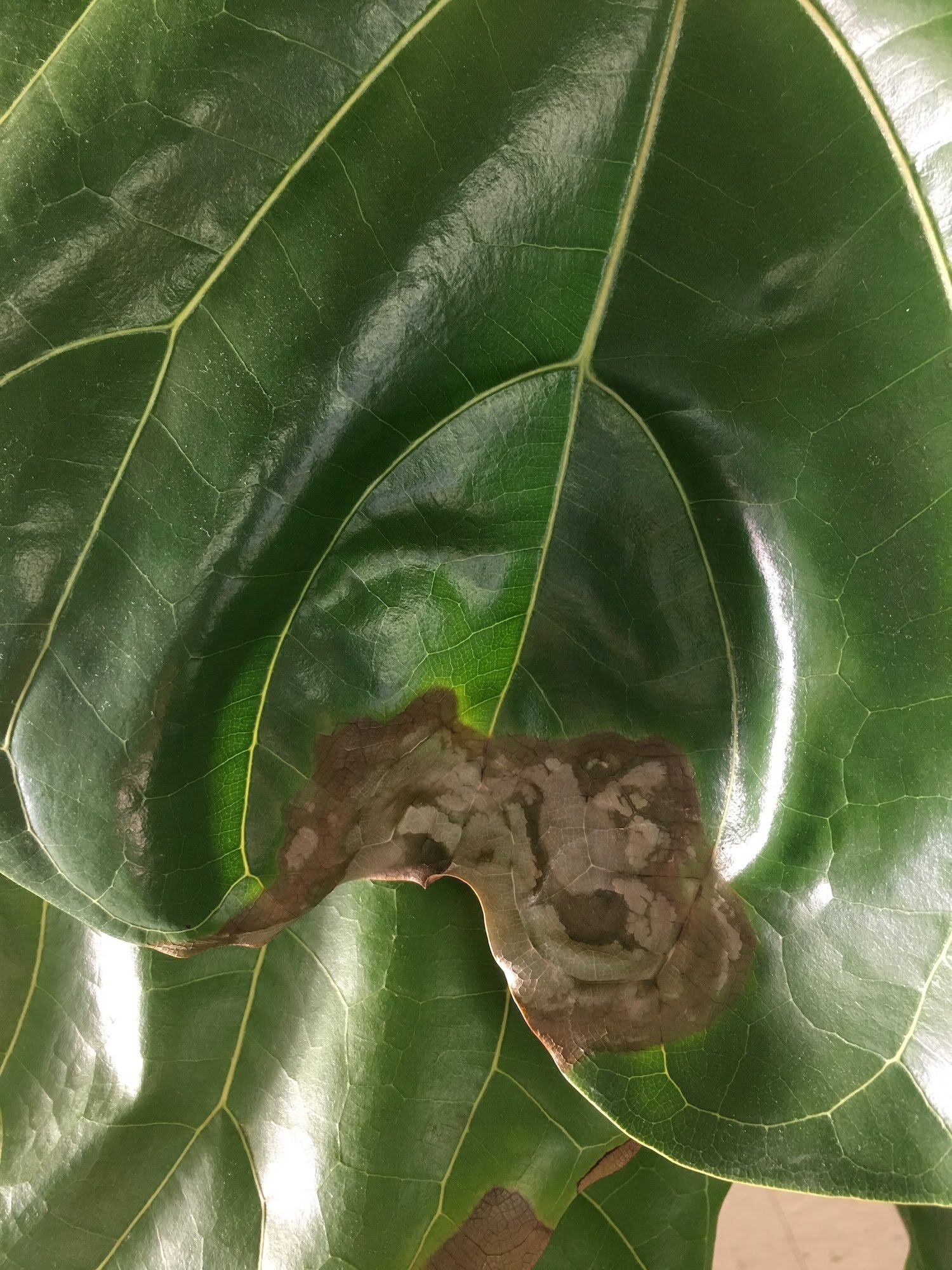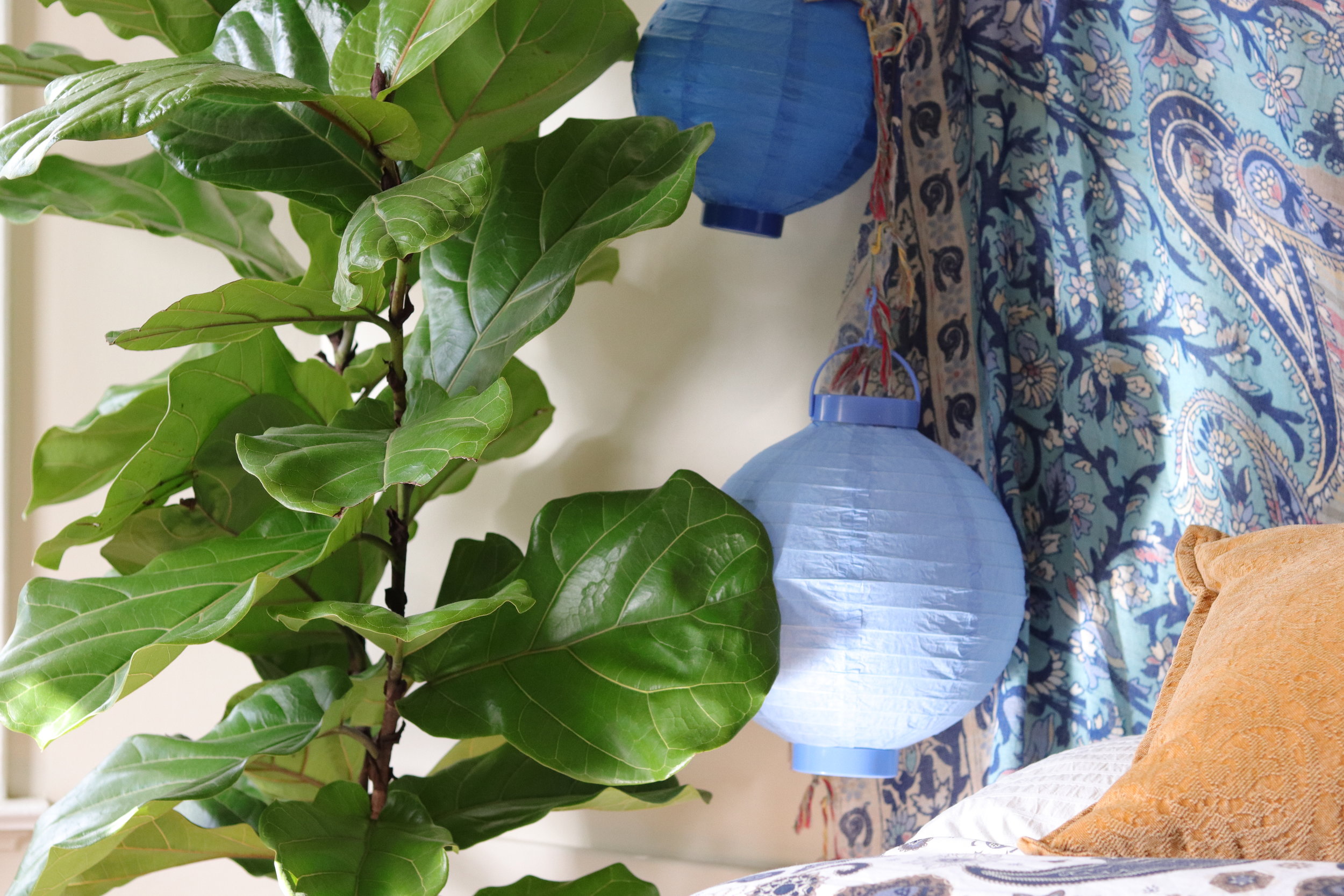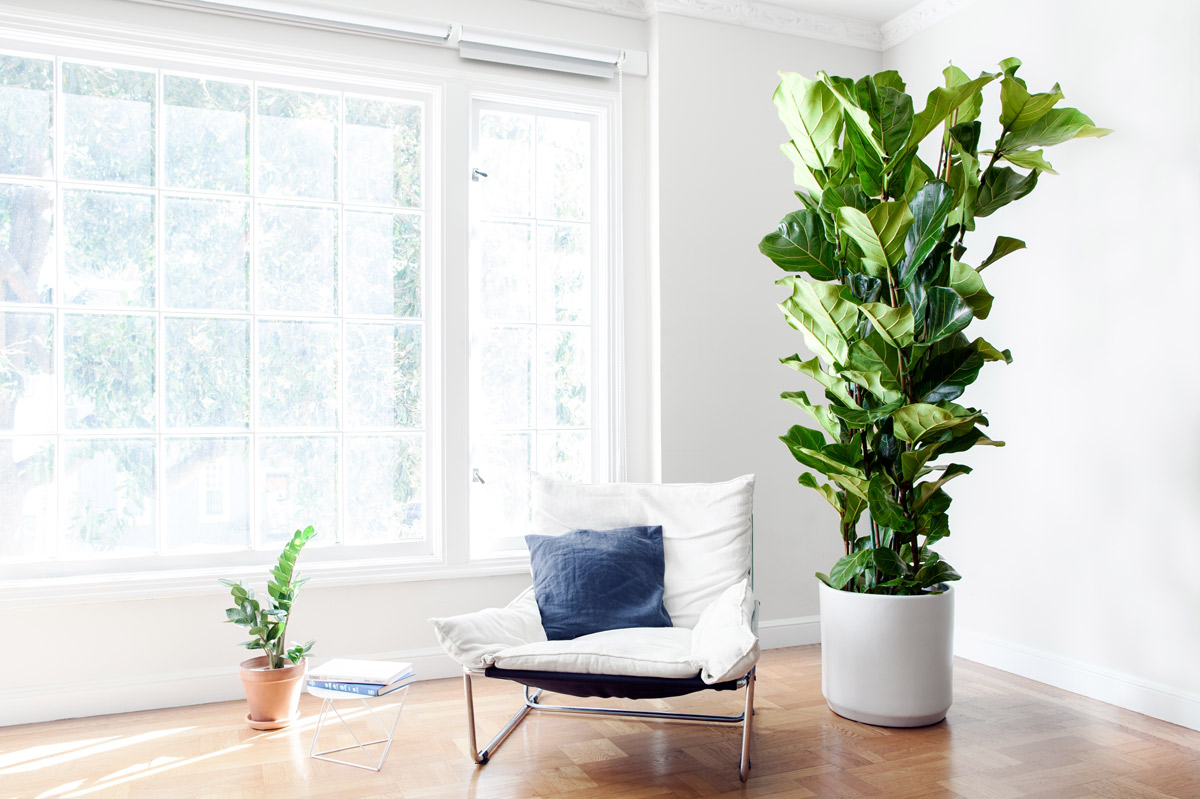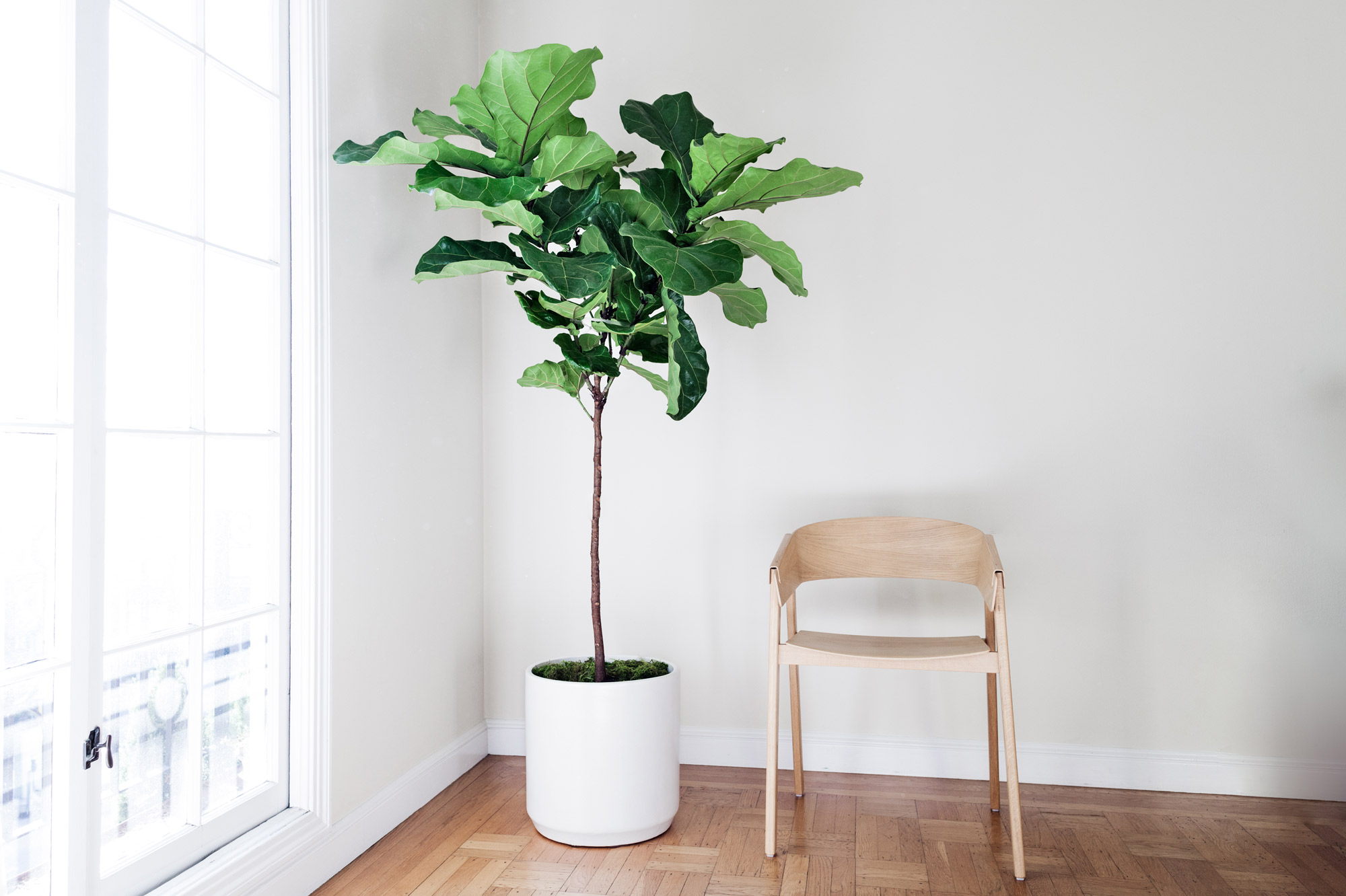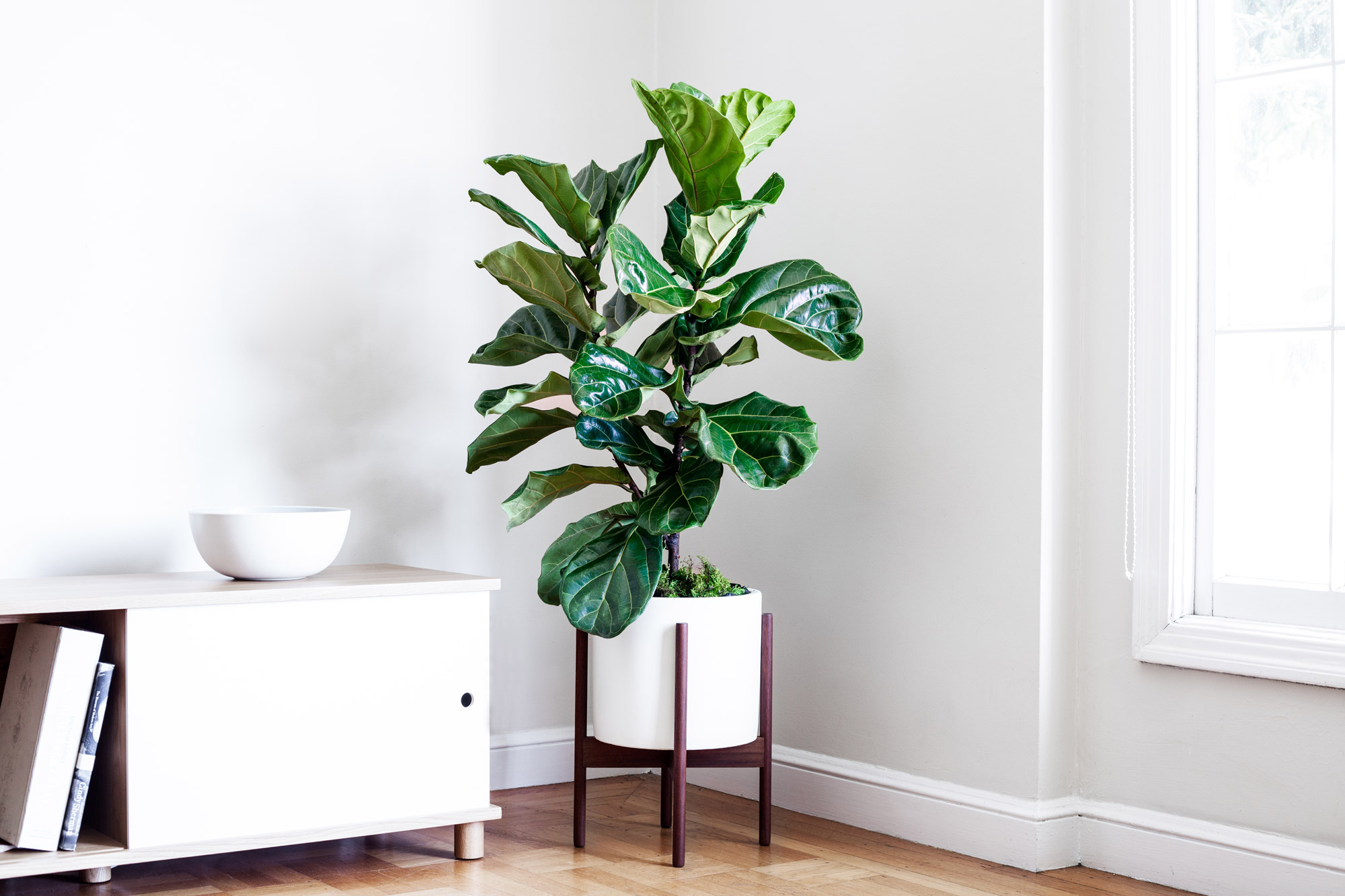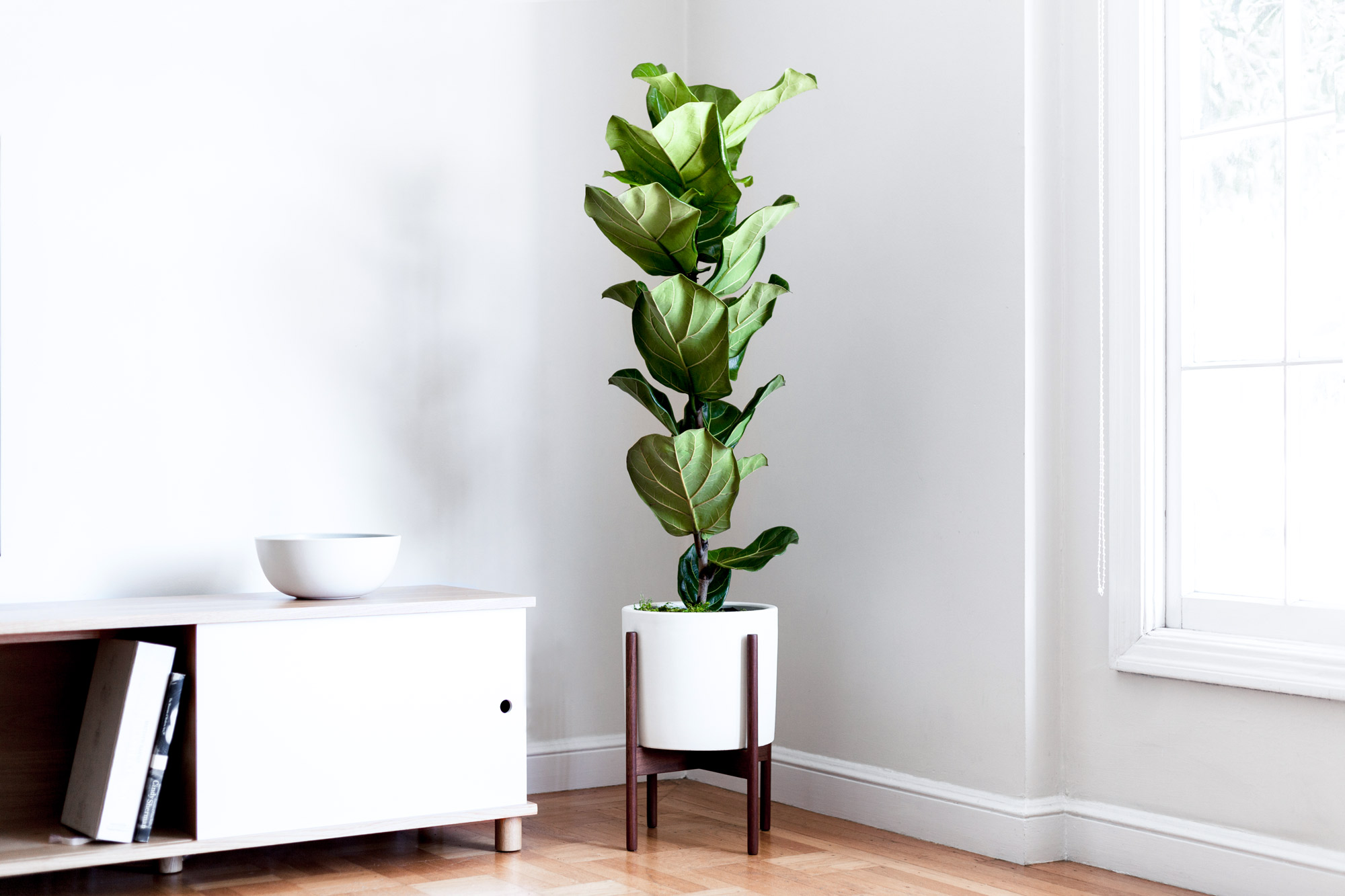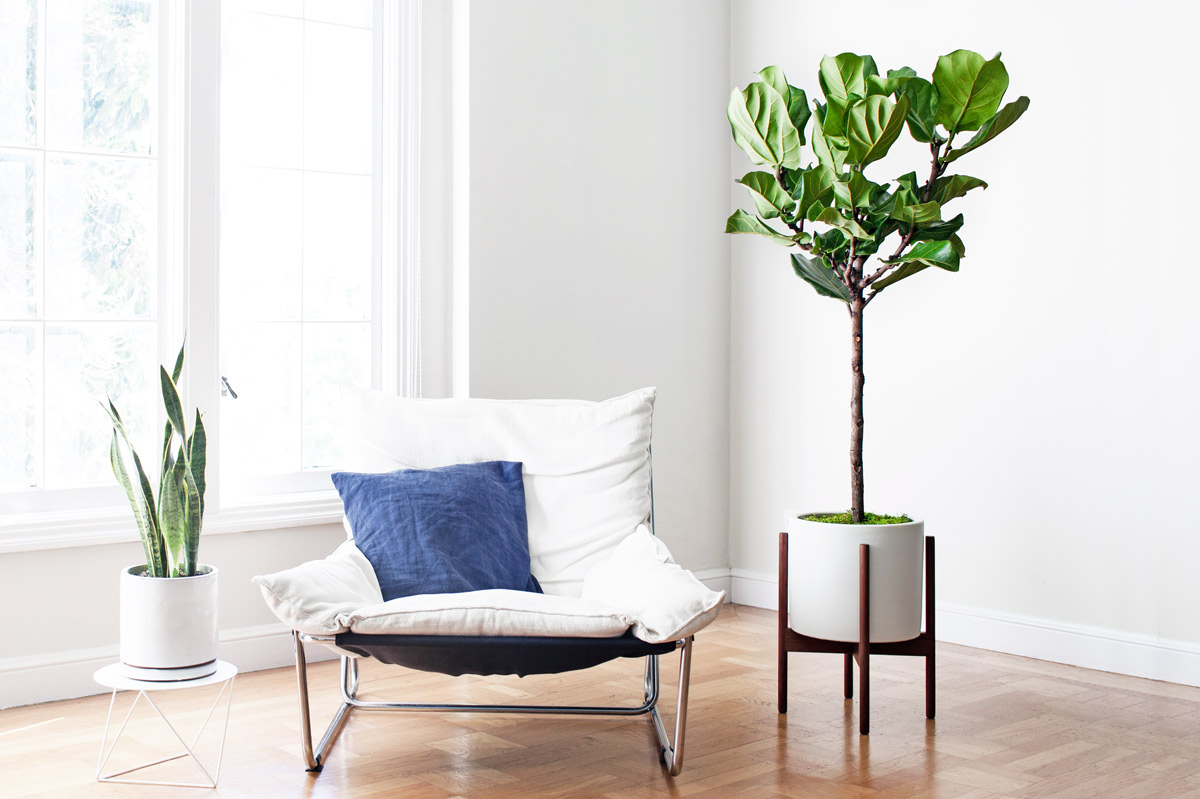A post by resident plant expert Claire Akin of the Fiddle Leaf Fig Plant Resource.
Spring is an exciting time for plant owners! Even if you aren’t planting outdoor gardens or flower beds, spring often promises lots of gorgeous new growth in our houseplants, and Fiddle Leaf Figs are no exception!
Fiddles are tropical plants, so they are capable of growing year-round, but many fiddle owners report incredible growth spurts in the spring. This is also a great time to do a little “spring cleaning” with your fiddle to prepare for another year of healthy growth.
For fiddle owners, spring is also a time of relief because it usually brings increased temperature, light, and humidity, which these plants love!
So how can we care for your Fiddle Leaf Fig in the spring to ensure the most healthy growth possible? Here are some of our favorite tips.
7 Spring Care Tips for Your Fiddle Leaf Fig
1. Repot
Fiddle Leaf Figs usually need to be repotted every two years, and spring is a great time to do this because weather conditions can help your tree recover from potential root shock.
Warmer temperatures also mean it’s possible to repot your fiddle outside, which is especially helpful if your tree is large!
If your fiddle is ready for an upgrade, find a pot with drainage that’s 2-3” bigger than your fiddle’s root ball (but no larger). Make sure to use a fast-draining soil like cactus mix or our Premium Fiddle Leaf Fig Soil.
Note: Don’t fertilize your fiddle for a month after repotting because the roots are extra vulnerable right now. You don’t want chemical burns on your roots or leaves!
The spring is a time for lots of new growth!
2. Prune
If your fiddle’s leaves are getting crowded or if the lower leaves are drooping, now’s a great time to remove them!
Simply use a sharp, clean knife or pair of pruning shears to remove those leaves. Make sure not to remove more than 10% of your fiddle’s leaves at once to avoid shock.
Bonus tip: If you prune any healthy leaves or branches, you can propagate them! Dip the cut end in some rooting hormone and put it in a glass of water so it can grow roots. Change the water every day and plant in soil when the roots are 1” long.
3. Clean your fiddle’s leaves
Your fiddle might appreciate a little spring cleaning! Dust and dirt on your plant’s leaves doesn’t just look bad, it can also clog pores and interfere with both photosynthesis and respiration, so it’s important to keep the leaves nice and clean.
To clean, use a hose, give your plant a shower, or spray it down with lukewarm water in a spray bottle before gently wiping the leaves with a cloth.
We suggest using our Leaf Amor spray, which helps you clean the leaves and also protects leaves from insects, bacteria, and fungus as well as dust and debris.
4. Adjust your watering routine
You’ve probably gotten used to watering less over the winter when the temperatures were cooler, but now that things are heating up, make sure to play close attention to your fiddle’s soil.
Use a moisture meter to monitor your plant’s root ball and note how long it takes the soil to dry out. You may find that your plant wants a little more water as the temperatures rise.
5. Fertilize
If you haven’t been fertilizing your Fiddle Leaf Fig, now is a great time to start.
Fertilizer is like a multivitamin for your plant and provides the nutrients necessary to support stem and leaf growth, as well as beautiful, glossy green color!
Make sure to find a 3-1-2 NPK liquid fertilizer and follow the directions on the bottle. Be careful to follow the recommended fertilizing schedule.
I can never remember to fertilize on a schedule, so I just use Fiddle Leaf Fig Food, which is gentle enough to use with every watering. I just add a little to my watering can whenever I water my fiddles, and my plants love it!
The gorgeous Fiddle Leaf Fig thrives best in bright indirect light. As spring approaches, adjust your plant’s positioning to avoid direct sunlight.
6. Adjust your light
In the spring, the angle of the sun’s light changes, so make sure to keep an eye on the kind of light your fiddle is getting. If the sun is now shining directly on your plant’s leaves, you may want to move it a few inches to avoid direct sunlight that could scorch your plant.
7. Branch out
Spring is also a great time to encourage your fiddle to grow some new branches! If you’d like new branches on your fiddle, you can try notching or pinching.
If you want the tree to branch from the top, try pinching: Grab some pruning shears, find the newest growth on the top of the tree, and snip that growth off. (Watch out for the sap!) You should see new branches beginning to form within 2-3 weeks.
If you want your tree to branch further down the trunk, try notching: find where you want a branch, locate the nearest node, and use a sharp knife to make a ⅛” cut in the trunk. Wipe the sap away with a towel.
Notching has about a 50/50 success rate, but if it works, you’ll see new branch buds within a few weeks!
A caveat: don’t make too many changes at once.
Spring is a fantastic time to step up your Fiddle Leaf Fig care and take advantage of growth spurts, but remember, fiddles don’t like too much change at once. In order words, don’t repot, prune, notch, and fertilize all in one day!
Wait at least a few weeks between major procedures like this so your tree can recover. And remember to focus on the basics first: light, water, fertilizer, and climate.
You’ll have the most gorgeous fiddle around!
About Claire
Claire Akin is a Fiddle Leaf Fig lover and created the Fiddle Leaf Fig Resource to share what she's learned about growing healthy and vibrant plants. She even created her own fertilizer specific to the needs of Fiddles! Learn all you'll ever need to know about these gorgeous plants at fiddleleaffigplant.com
Indoor plants, potted & delivered
Premium plants paired with stylish pots, plus lifetime plant care support. Order online at leonandgeorge.com





